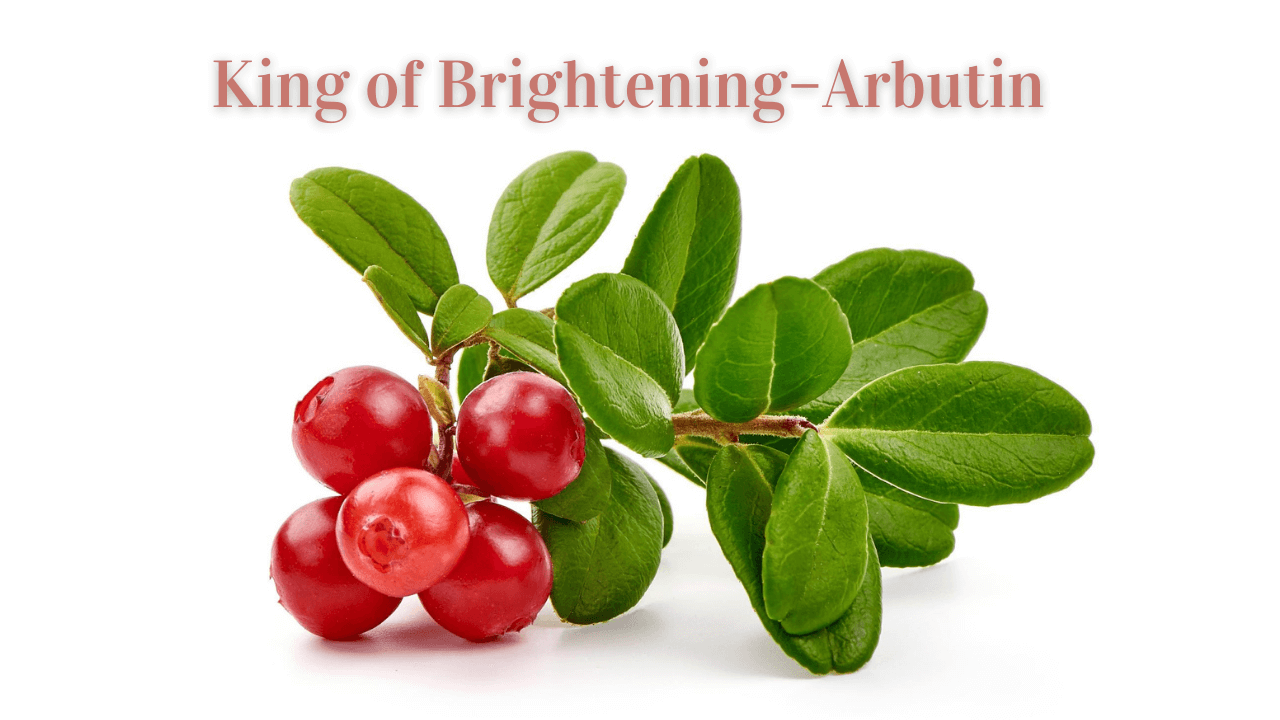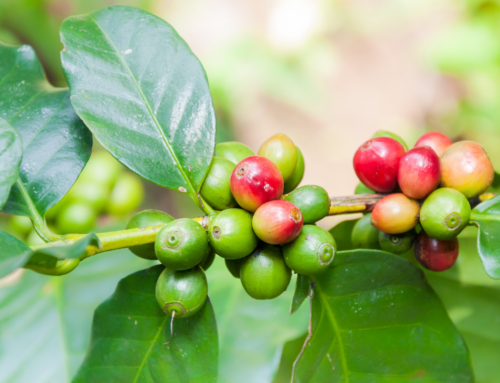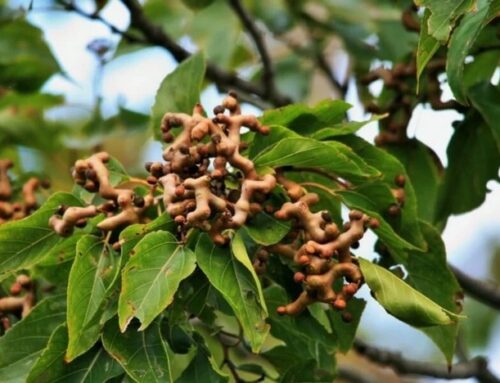Arbutin, also known as alpha-arbutin, occurs naturally in several different plant species. The plants with the highest known concentrations are bearberry and mulberry berry. It is also found in blueberry, cranberry, wheat and pear varieties. Arbutin is a glycoside; glycosylated hydroquinone extracted from the bearberry plant of the genus Arctostaphylos, and many other medicinal plants, mainly of the genus Ericaceae. Topical application can inhibit tyrosinase, thereby preventing the formation of melanin.
What can arbutin treat?
It can lighten hyperpigmentation, which means it can lighten sun spots, age spots, acne scars and melasma. In addition, arbutin can prevent the formation of freckles and pigmentation after sun exposure.
- For more severe pigmentation and chloasma, hydroquinone has always been the preferred ingredient due to its strength, but the hydroquinone often used in skin care products is synthetic and corrosive, and will cause serious damage if used improperly Skin (e.g. permanent damage to the skin). Light blue/light gray spots). Arbutin is a safer and more natural derivative of hydroquinone, and topical treatment of arbutin has been shown to treat melasma and severe dark areas.
- Arbutin can stop any extra production of melanin (the pigment that produces skin tone). Melanin is produced by an enzyme called tyrosinase, which produces the amino acid tyrosine, which is then delivered to cells called melanocytes, which convert tyrosine into melanin. Arbutin disrupts this series of events by telling tyrosinase to suspend the production of tyrosine-without tyrosine, melanocytes have no effect, thereby limiting the production of melanin in the skin. That’s it: less tyrosine and less melanin means less pigment, fewer dark spots and a more even skin tone. brilliant.
- Arbutin can make the skin tone even and bright, making your skin look healthier and more vigorous. Think of it as a skincare and beauty mixer-arbutin does not mix liquid foundation with liquid foundation, but literally mixes your actual skin.
How does arbutin work?
Arbutin is composed of hydroquinone and sugar groups. The hydroquinone group allows arbutin to act as a tyrosinase inhibitor, which is a key enzyme involved in the production of melanin (pigment). This inhibitory activity is attributed to the structural similarity between the hydroquinone group and tyrosine, which is a natural substrate of tyrosinase. In addition to its innate inhibitory effect, arbutin can also act as a slow release reservoir for hydroquinone. Once absorbed by the skin, the enzymes in the body can separate the sugar groups from arbutin and release hydroquinone. This is like a built-in safety valve, which prevents immediate exposure of the skin to excessive hydroquinone.
Are there any side effects of arbutin ?
Some people believe that since arbutin from natural sources is a natural source, it has no side effects and safety issues for users. If the compound is derived from synthetic sources such as hydroquinone, it is unsafe for topical use on the skin. However, under alkaline conditions, arbutin will be converted to hydroquinone, which means it becomes unsafe under certain conditions. The skin does not have an alkaline environment, which is why arbutin is not hydrolyzed to hydroquinone.
Compared with hydroquinone-based skin whitening formulas, ursolic acid is an effective skin whitening substitute. It is suitable for pigmentation, tan skin and skin that is harmful to the sun. It makes the skin clear and shiny. Can significantly reduce signs of premature aging, acne opening and further light damage.
For your beauty and health, we provide our customers with high-quality arbutin acid at a reasonable price, so that arbutin can illuminate your beauty.






Leave A Comment